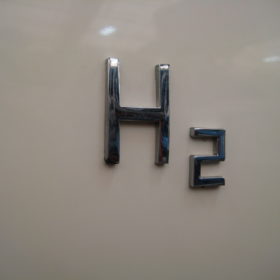
The material was used by scientists in the U.S. in electrochemical cells which use electricity to separate steam into hydrogen and oxygen. The researchers say the oxide of perovskite used in the electrode improves cell performance and reduces operating temperatures.
Scientists at the U.S. Department of Energy’s Idaho National Laboratory (INL) have used an oxide of perovskite to create an oxygen electrode for use in electrochemical cells used for hydrolysis-based hydrogen production.
The researchers claim the perovskite oxide could help such cells convert hydrogen and oxygen into electricity without additional hydrogen.
Described in the study Self-sustainable protonic ceramic electrochemical cells using a triple-conducting electrode for hydrogen and power production – published in Nature Communications – the electrode has triple-conducting properties and superior electrochemical performance at around 400-600 degrees Celsius, according to the research group.
The electrode was used in an electrochemical cell which uses electricity to split steam into hydrogen and oxygen.
Reversible operation
“The protonic ceramic electrochemical cell (PCEC) is a proton-conductor-based solid oxide cell that can serve in a reversible-operation manner to store renewable energies, using water electrolysis to produce hydrogen and then convert it back to electricity in fuel cell mode,” the INL scientists said.
Such cells offer low-cost energy storage and conversion at reduced temperatures with high efficiency and durability. However, using robust electrodes under high-steam concentration can prove problematic. “The high temperatures require expensive materials and result in faster degradation, making the electrochemical cells cost-prohibitive,” the researchers stated.
A triple-conducting oxide of the perovskite PrNi0.5Co0.5O3-δ (PNC) was used by the researchers to build an electrode with a 3D mesh-like architecture which made more of its surface area available to split water into hydrogen and oxygen.
“A self-architectured, mesh-like electrode is synthesized to construct a highly porous frame for enhanced mass transport,” the scientists said. “When this nanostructured electrode is incorporated into the cell … better performance is obtained.”
Performance
The INL group said the innovation improved performance due to the electrode’s improved concentration polarization resistance, and reaction kinetics at an interface attributable to high porosity and fine nanoparticles.
The two technologies – the mesh structure and new electrode material – enabled self-sustainable, reversible operation at 400-600 degrees Celsius, the group claimed. “We demonstrated the feasibility of reversible operation of the PCEC at such low temperatures to convert generated hydrogen in hydrolysis mode to electricity – without any external hydrogen supply – in a self-sustaining operation,” said Dong Ding, from the INL group.
The researchers said the electrode’s ultra-porous structure could be studied further in order to be optimized by changing the treatment temperature to compromise between porosity and active sites.
The INL team in September 2018 developed a ceramic steam electrode to demonstrate efficient hydrogen electrolysis at temperatures far lower than those previously possible.
Lắp đặt điện mặt trời Khải Minh Tech
https://ift.tt/2X7bF6x
0906633505
info.khaiminhtech@gmail.com
80/39 Trần Quang Diệu, Phường 14, Quận 3
Lắp đặt điện mặt trời Khải Minh Tech
https://ift.tt/2ZH4TRU
Không có nhận xét nào:
Đăng nhận xét